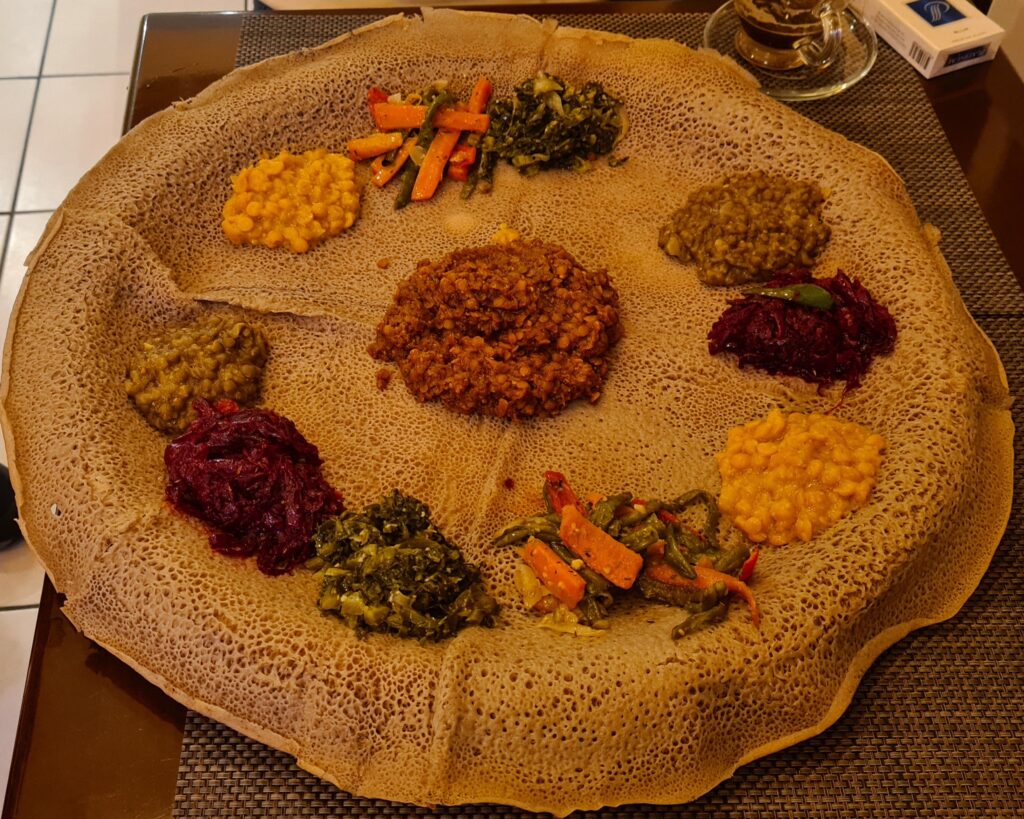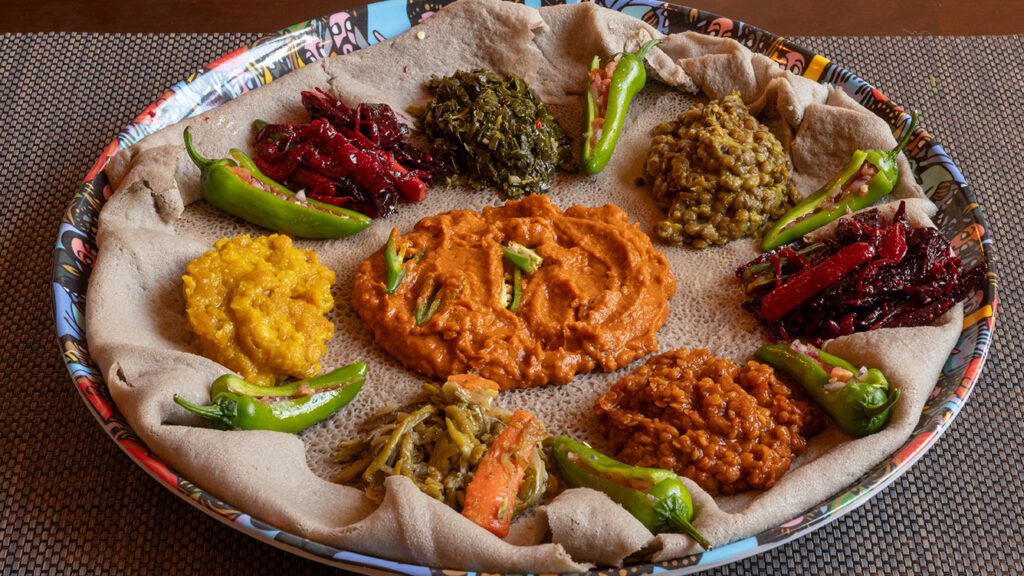
Eating with hands is a significant part of Ethiopian culture, and it goes beyond just the act of eating—it’s a tradition steeped in hospitality, community, and shared experience. Here’s why Ethiopians eat with their hands:
- Cultural Tradition
- Cultural Identity: Eating with the hands is a long-standing tradition in Ethiopia that has been passed down through generations. It’s seen as an essential aspect of Ethiopian hospitality and social dining.
- Connection to Food: In Ethiopian culture, food isn’t just about sustenance—it’s an experience. Eating with hands allows for a more intimate connection with the meal, as people can feel the texture of the food, which enhances the experience.
- Communal Dining
- Sharing is Key: Meals are often served on a large communal platter with multiple people eating from it (sharing together). Eating with hands allows people to dine from the same platter, and it promotes unity and bonding since everyone is involved in the shared meal.
- Gursha: This practice involves one person offering a bite of food to another, using their hands, as a sign of love, respect, and hospitality. It’s an act of nurturing and togetherness. Traditionally ‘Ethiopians, use this gesture to a guest they consider special, between two lovers, mothers to a children etc..
- Use of Injera
- Injera as a Tool: In Ethiopian dining, injera (a sour, spongy flatbread made from teff, highly nutrient grain and gluten free) acts as both a plate and an eating tool. The injera absorbs the flavours of stews and dishes like Doro Wat, making it a functional and delicious part of the meal.
- Scoop, Don’t Cut: Instead of using utensils to cut or scoop food, the injera is used to scoop up portions of stews, vegetables, and meats, adding to the hands-on nature of the meal.
- Spiritual & Symbolic Significance
- The Right Hand: Ethiopians traditionally eat with their right hand. The right hand symbolizes purity and respect, and it’s used to connect with the food and others in a respectful and meaningful way.
- Respect for Food: Eating with hands reflects a sense of humility and reverence for the food, making the act of eating more sacred.
- Social and Emotional Connection
- Family Bonding: Meals are often eaten with family and close friends. Sharing food from the same platter and eating with hands encourages closeness and emotional connection, fostering a strong sense of community and togetherness.
In summary, eating with hands in Ethiopia is a practice that involves much more than simply using one’s hands—it’s about cultural tradition, hospitality, community, and a deeper connection to food. It’s a communal experience that brings people together, celebrates shared heritage, and emphasizes respect for food and one another.




